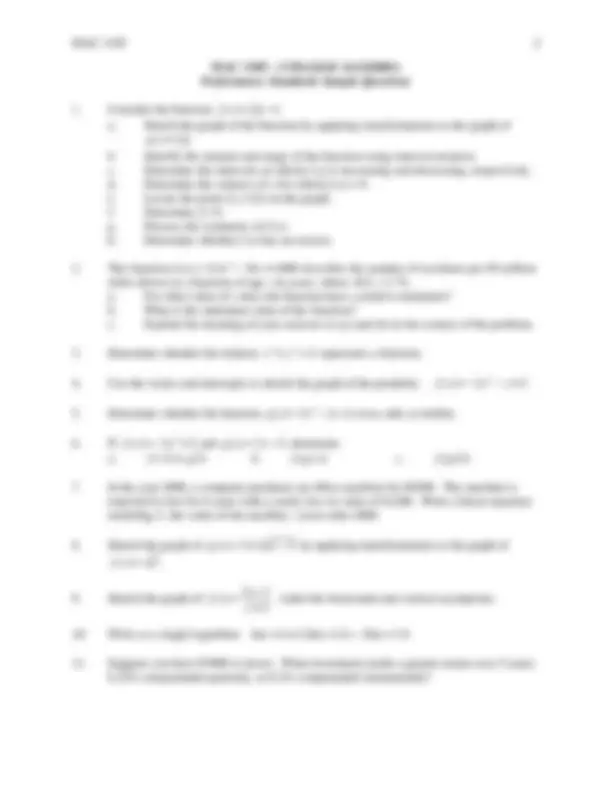



Study with the several resources on Docsity

Earn points by helping other students or get them with a premium plan


Prepare for your exams
Study with the several resources on Docsity

Earn points to download
Earn points by helping other students or get them with a premium plan
Community
Ask the community for help and clear up your study doubts
Discover the best universities in your country according to Docsity users
Free resources
Download our free guides on studying techniques, anxiety management strategies, and thesis advice from Docsity tutors
Material Type: Exam; Class: College Algebra; Subject: MAC, Mathematics: Calc&Precalc; University: Manatee Community College; Term: Unknown 1989;
Typology: Exams
1 / 2

This page cannot be seen from the preview
Don't miss anything!


MAC 1105 – COLLEGE ALGEBRA
Catalog Description: (3) (A.A.) Three hours lecture per week. Prerequisite: MAT 1033 or appropriate score on the mathematics placement test. This course meets Area II requirements for both A.A. General Education Requirements and A.S. General Education Requirements. This is a rigorous introduction to the mathematical concepts necessary for successful study of MAC 1114, MAC 1140 or MAC 2233. This course is primarily a conceptual study of functions and graphs, their applications, and of systems of equations and inequalities. Linear, quadratic, rational, absolute value, radical, exponential and logarithmic functions will be investigated. The use of a graphing calculator is integrated throughout this course.
Performance Standards: At the successful completion of this course, the student should be able to:
Performance Standards Sample Questions
a. Sketch the graph of the function by applying transformations to the graph of g ( x ) = x. b. Identify the domain and range of the function using interval notation. c. Determine the intervals on which f ( x ) is increasing and decreasing, respectively. d. Determine the value(s) of x for which f ( x ) = 0. e. Locate the point (2, f (2)) on the graph. f. Determine f (-5). g. Discuss the symmetry of f ( x ). h. Determine whether f ( x ) has an inverse.
f ( x ) = x.